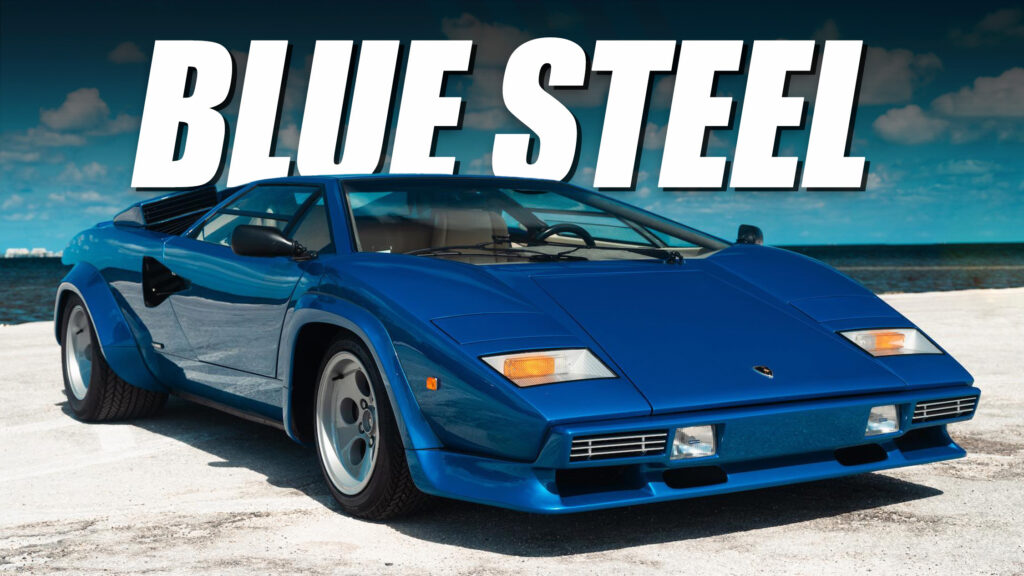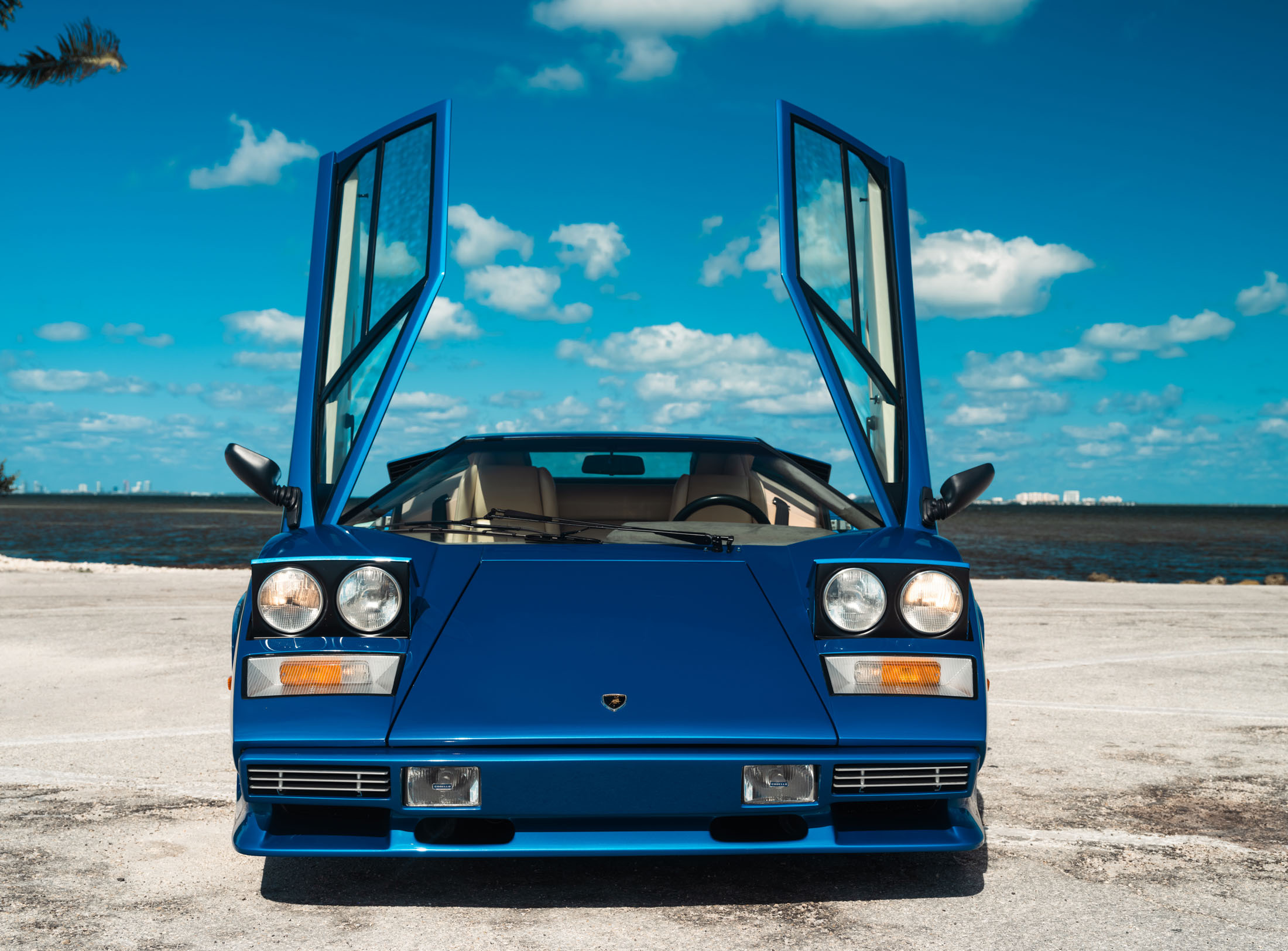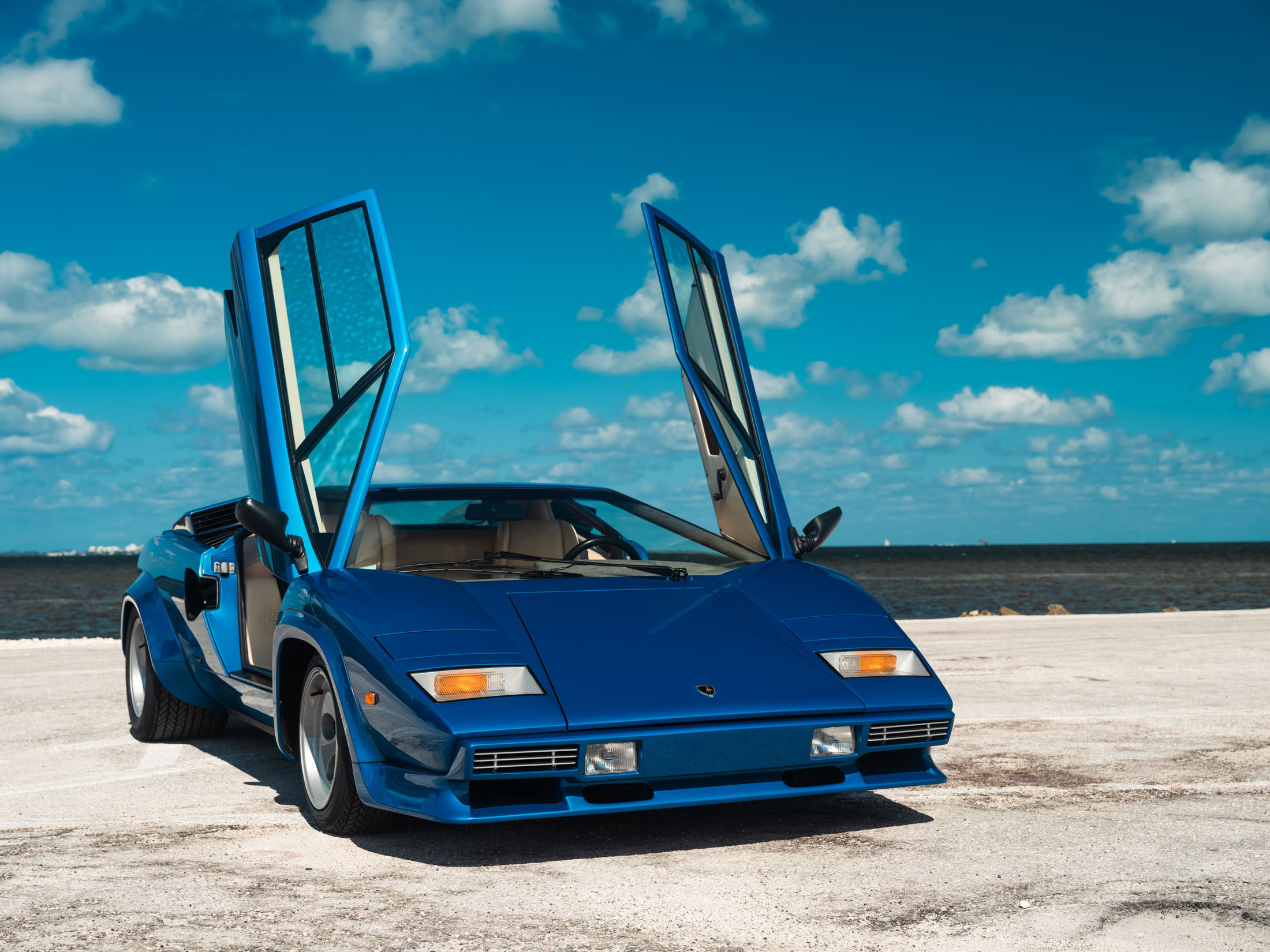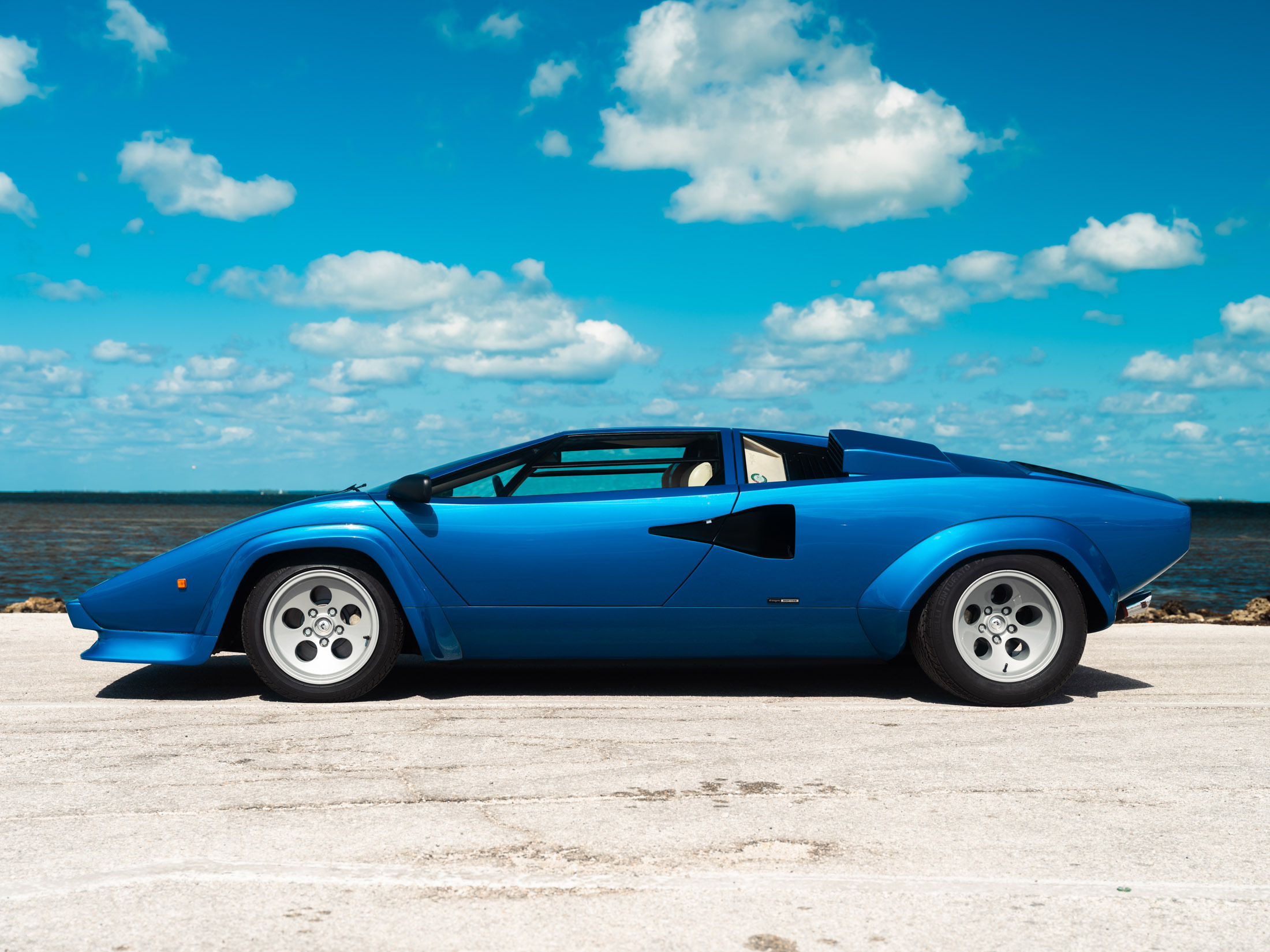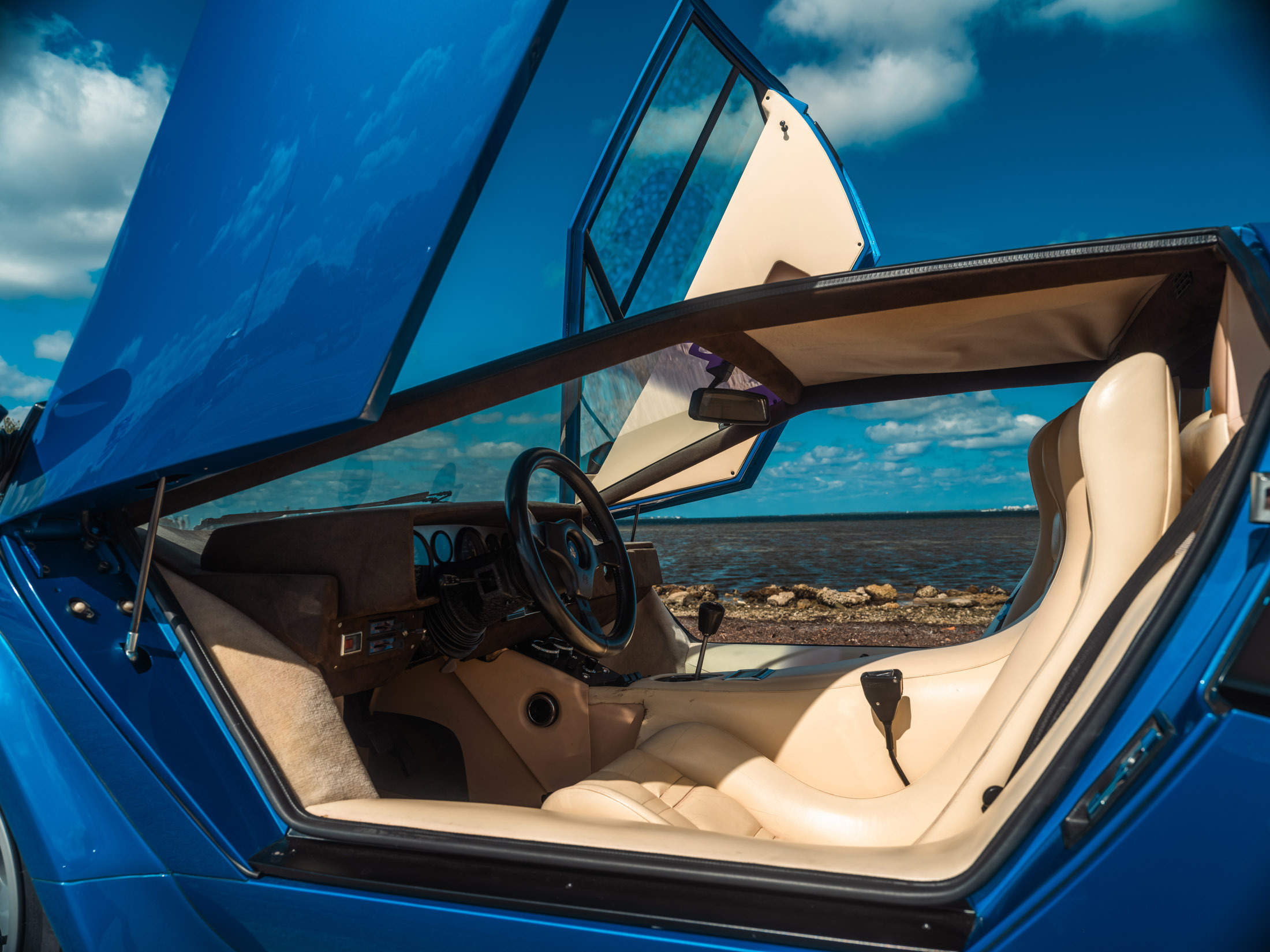- Final year for the LP400 S that introduced the now iconic fender flares to the Countach in 1978.
- This is one of only 105 of the Series II cars that featured smooth-finished wheels and a lower ride height.
- Car was ordered without the famous boomerang rear wing that dropped the top speed by 10 mph.
Production of the Lamborghini Countach began 40 years ago this year, three years after the original LP500 concept stunned crowds at the 1971 Geneva Motor Show. But the narrow-body Countach LP400 that debuted in ’74 didn’t look like the car most of us mentally picture when we hear the name. That Countach didn’t arrive until Lamborghini released the LP400 S in 1978.
Copying a look made famous by racing team owner Walter Wolf’s own modified Countach, Lamborghini equipped the S with huge fender flares to accommodate Pirelli’s brand new P7 rubber, the first modern low-profile tires. The rear wheels grew from 9 inches to 12 inches wide and their tires now measured 345 mm across, instead of a puny 215 mm. Can you imagine a modern automaker facelifting a car and increasing the size of the rear boots by 60 percent?
Related: Lamborghini Built A New 1971 Countach LP500 Prototype From Scratch For A Collector
Early S wheels feature a five-hole design, but each of those holes had a pronounced rim, whereas the Series II cars like the example on these pages, gained smoother holes that exaggerated the depth of the offset and a ride height reduction to bring Marcelo Gandini’s wedge (now minus the periscope rear view mirror) even closer to the ground.
A now famous boomerang rear wing was optional, but not everybody ordered it, and not because it made the already awful rear visibility worse. Tests showed that it cost at least 10 mph (16 km/h) at the top end, and who wanted to admit to excited schoolboys crowding around when you swung the scissor door upwards and exited that your spaceship on wheels was all out of puff at not much more than 150 mph (240 kmh)?
The fat wheels and arches meant that the LP400S was heavier and less aerodynamically efficient than the original LP400, and to make matters worse, it was less powerful, too. Early, slim-hipped cars got a 3.9-liter V12 rated at 370 hp (375 PS) and could hit a true 175 mph (282 km/h), but the S was downgraded to 350 hp (355 PS). The later Countach 500S/5000S clawed back the horses in 1982 with a capacity hike to 4.8 liters, and when four-valve heads arrived in 1986 for the 5000QV, power leapt to 449 hp (455 PS), and the top speed to 180 mph (290 km/h).
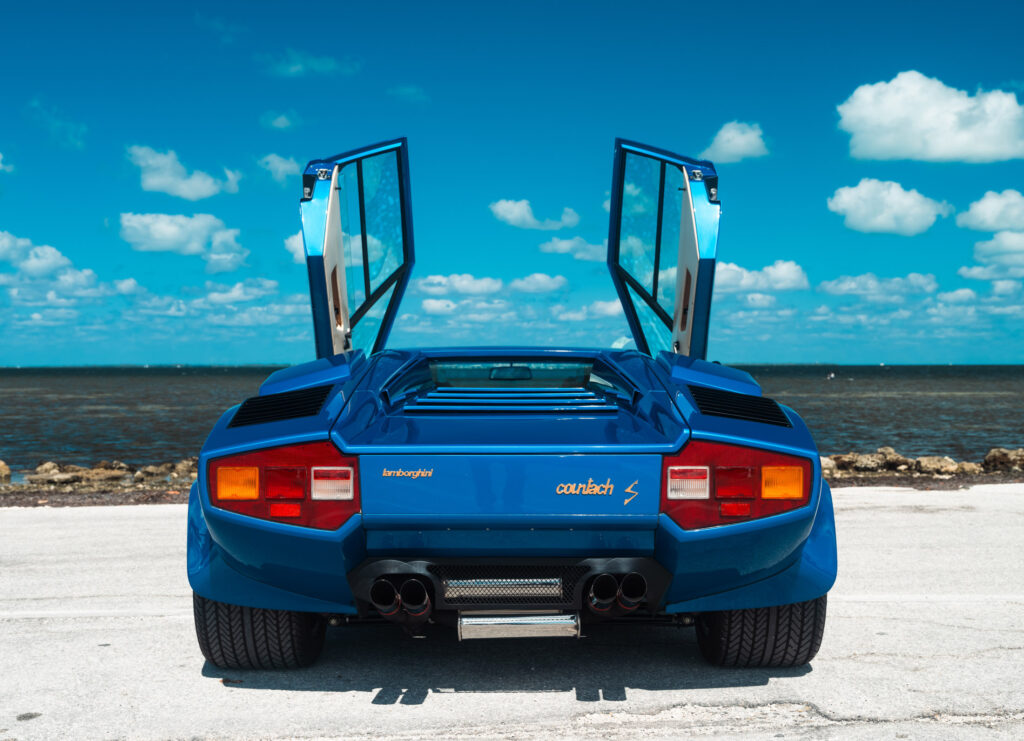
But from a 2024 standpoint who really cares if the LP400 was the slowest Countach? It still goes faster than most owners mindful of RM Sotheby’s $650k asking price will want to go, and more importantly, it still looks like it’s good for 240 mph (386 km/h).
This classic started off as a red car and spent its early days in Switzerland but to our eyes looks so much better repainted in Tahiti Blue, a rare factory-available Countach color. It’s one of 237 S models and 105 Series II versions of the S, has recently had €71,000 ($76k) spent on a cosmetic and mechanical refresh, and is located in Miami. We like it just fine without the wing, but would you be tempted to bolt one on?
Images: RM Sotheby’s




